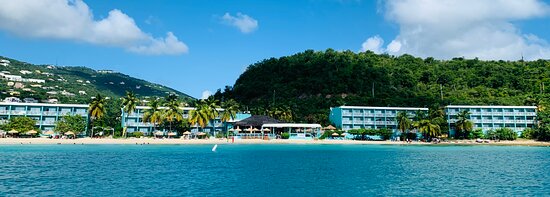
Worst Time to Visit St. Thomas: A Comprehensive Travel Guide
Planning a tropical getaway to St. Thomas can be an exciting prospect, but timing is everything. While this beautiful Caribbean island offers stunning beaches, crystal-clear waters, and vibrant culture, there are certain periods when travelers might want to reconsider their visit. This comprehensive guide will explore the worst time to visit St. Thomas, helping you make an informed decision about your travel plans.
Understanding St. Thomas's Climate and Seasonal Challenges
St. Thomas, part of the U.S. Virgin Islands, experiences a tropical climate that brings unique challenges throughout the year. To determine the worst time to visit St. Thomas, we'll examine several critical factors that can significantly impact your travel experience.
1. Hurricane Season: Nature's Biggest Threat
The worst time to visit St. Thomas is undoubtedly during the peak hurricane season, which runs from June 1st to November 30th, with the most intense period between August and October. During these months, travelers face several significant risks:
- Unpredictable Weather: Frequent tropical storms and hurricanes can disrupt travel plans
- High Risk of Cancellations: Airlines and cruise lines may change schedules with little notice
- Potential Property Damage: Resorts and tourist infrastructure can be compromised
- Safety Concerns: Severe weather conditions pose direct risks to travelers
Hurricane Statistics to Consider
- August and September are statistically the most active months for hurricanes
- The Virgin Islands are particularly vulnerable to tropical storm systems
- Average of 6-8 named storms potentially affect the region during peak season
2. Extreme Heat and Humidity
While St. Thomas is known for its tropical climate, the summer months present challenging weather conditions that make it another contender for the worst time to visit St. Thomas:
- Temperatures often exceed 90°F (32°C)
- Humidity levels can reach up to 80-90%
- Minimal trade winds reduce cooling effects
- Outdoor activities become uncomfortable during midday hours
3. Rainy Season Challenges
From September to November, St. Thomas experiences its wettest period, which can significantly impact travel experiences:
- Frequent afternoon thunderstorms
- Reduced visibility for water activities
- Potential flooding in some areas
- Increased mosquito populations
- Limited outdoor and beach activities
Economic and Practical Considerations
4. Peak Pricing During Challenging Seasons
Ironically, the worst time to visit St. Thomas coincides with some of the highest pricing periods:
- Hurricane season overlaps with reduced hotel occupancy
- Limited availability of budget-friendly accommodations
- Higher prices for remaining open resorts
- Expensive last-minute travel insurance
5. Reduced Tourist Services
During challenging seasons, many businesses operate with reduced services:
- Limited restaurant and activity options
- Reduced transportation services
- Potential closures of tourist attractions
- Minimal staff availability
Specific Months to Avoid
September: The Perfect Storm of Challenges
September emerges as potentially the absolute worst time to visit St. Thomas due to:
- Peak hurricane season
- Highest rainfall
- Most extreme heat
- Lowest tourist infrastructure support
- Highest risk of travel disruptions
October: Continuation of Challenging Conditions
While slightly improving from September, October still presents significant travel challenges:
- Ongoing hurricane risks
- Persistent heavy rainfall
- Reduced tourism infrastructure
- Potential post-hurricane recovery periods
Practical Recommendations
Alternative Travel Windows
If you're flexible with your travel plans, consider these more favorable periods:
- December to April: Dry season with minimal hurricane risks
- Mid-April to June: Shoulder season with lower prices and better weather
- November: Transition period with improving conditions
Preparation Tips If Traveling During Challenging Seasons
For travelers committed to visiting during less-ideal times:
- Purchase comprehensive travel insurance
- Maintain flexible travel arrangements
- Monitor weather forecasts closely
- Pack appropriate emergency supplies
- Consider travel evacuation services
Conclusion
Understanding the worst time to visit St. Thomas is crucial for planning a successful Caribbean vacation. While the island offers incredible beauty and experiences, timing can make a significant difference in your travel enjoyment.
By avoiding peak hurricane months, extreme heat periods, and rainy seasons, you can maximize your chances of an memorable and stress-free St. Thomas adventure.
Final Travel Advisory
Remember: The worst time to visit St. Thomas is not just about weather—it's about balancing potential risks with travel experiences. Always prioritize safety, flexibility, and thorough preparation.
